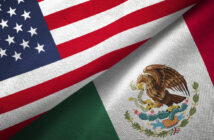Becoming a doctor used to be the ultimate ticket to success in America. It took brains and hard work, but once you put the initials M.D. after your name all the effort paid off. Doctors enjoyed respect and financial success, and rarely had to worry about whether they would find work.
Becoming a doctor today still requires brains and a lot of hard work, and generally acquiring hundreds of thousands of dollars in student loan debt in the process. What it no longer commands is respect, financial success, or even a fair chance to practice your profession in the country where you were born and studied. American doctors are facing the same sort of employment discrimination that workers in many other fields face: Their industry now prefers workers from other countries.
While the United States is facing an unprecedented health care crisis, more than 6,500 recent American medical school graduates do not even have the chance to practice medicine. They have been “passed over by residency programs around the country,” writes Dr. Esther Raja, who advocates for these unemployed physicians. All of these idled health care professionals, whose skills should be at a premium have already passed rigorous licensing exams. “At the same time, the government continues to issue thousands of visas to foreign doctors each year, despite the medical talent languishing at home,” she notes.
The deck is stacked against Americans who graduate from American medical schools. Foreign doctors are just more profitable. To begin with, Dr. Raja explains, the Educational Commission for Foreign Medical Graduates (ECFMG), which has to certify foreign doctors applying for J-1 visas, collects about $1,050 for each one they certify. The ECFMG also charges the foreign doctors $4,000 in exam fees. It’s a very lucrative practice for the ECFMG, which pocketed $90 million in revenues in 2018.
Some countries, like Saudi Arabia, pay the cost of having their citizens do their residency at U.S. hospitals. A Saudi resident can generate hundreds of thousands of dollars in revenues for the American hospital where they train.
In addition, notes Dr. Raja, “Many residency-program administrators were themselves J-1 visa holders at one point. And they show a bias for their countrymen. It’s no coincidence that roughly 50 percent of all foreign doctors on J-1 visas hail from just three countries — Canada, India and Pakistan.”
Rather than spur calls for enabling American doctors to practice medicine in the United States, the COVID-19 crisis has done precisely the opposite. It has intensified the pressure to admit still more foreign doctors who already account for about 30 percent of practicing physicians. Immigration advocates demand that any foreign national who has ever touched a stethoscope be granted permanent U.S. residency – a provision that was included in the House approved HEROES Act.
We’re told we have a shortage of doctors in the United States – that we have one of the lowest ratios of doctors to population in the developed world. We don’t. Like so many other fields, what we have a system that discriminates against our own best workers, in favor of foreigners.





1 Comment
Pingback: Mothers, Don’t Let Your Babies Grow Up to Be Doctors… Because the Industry Doesn’t Want Them – India Inc Blog